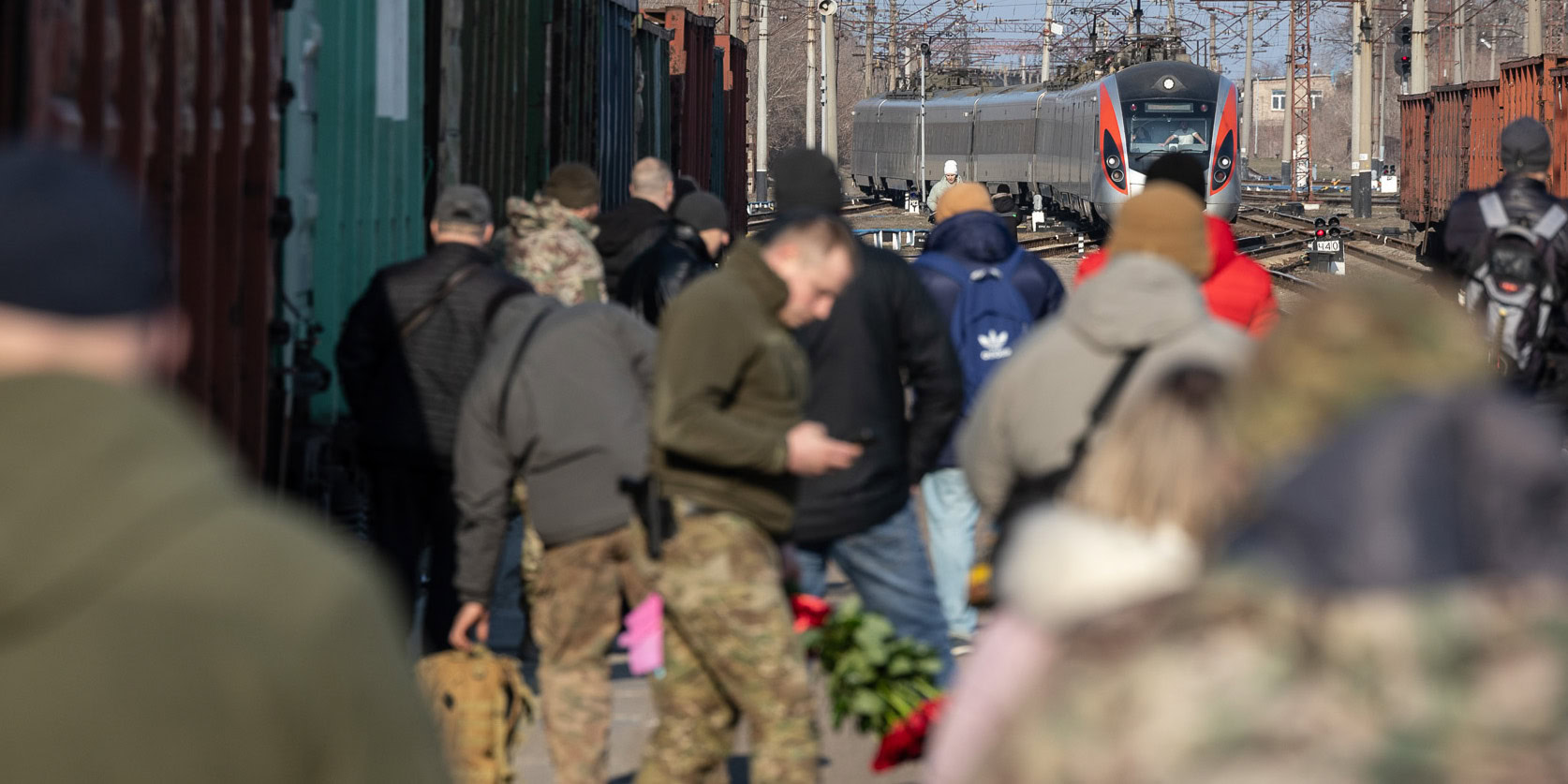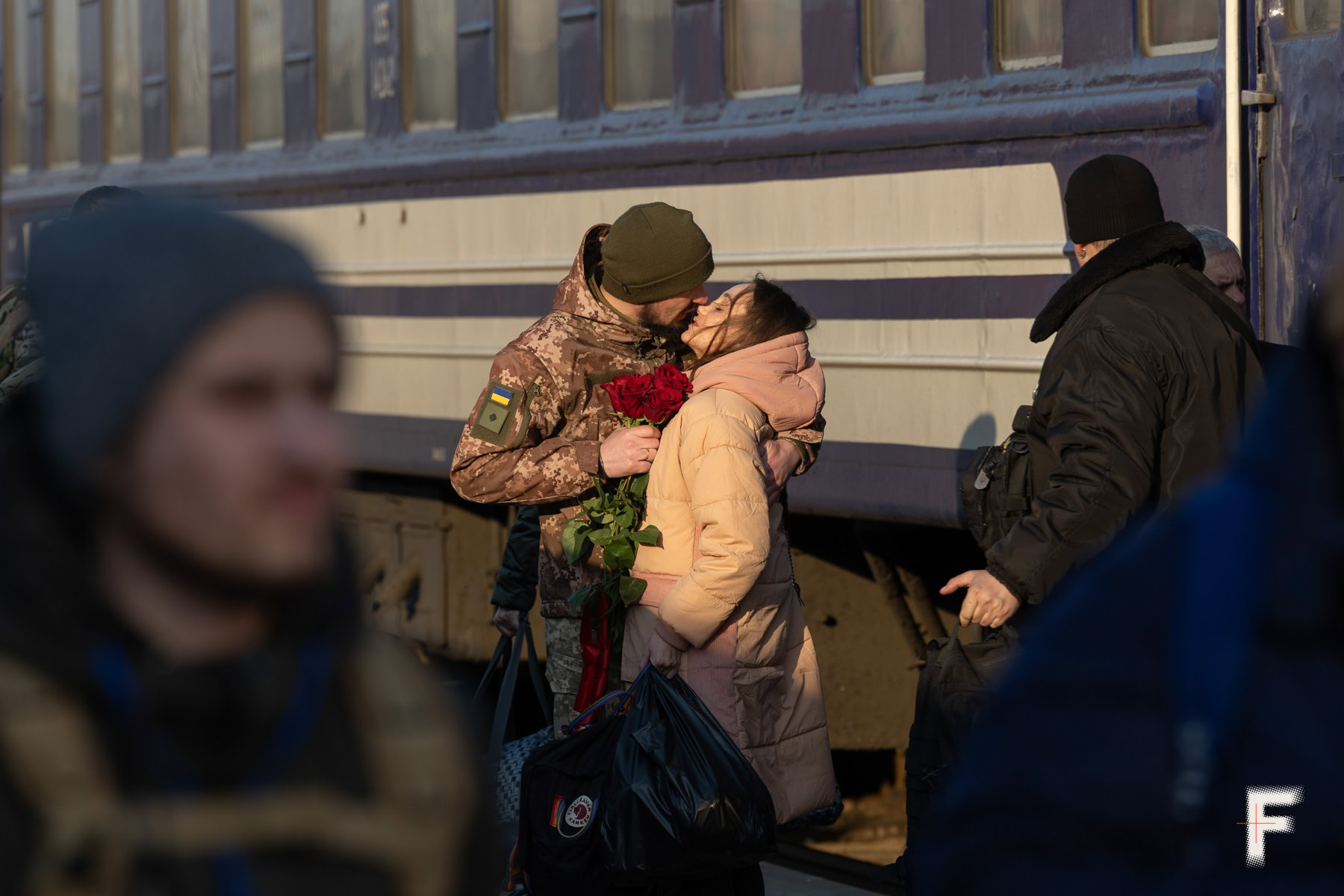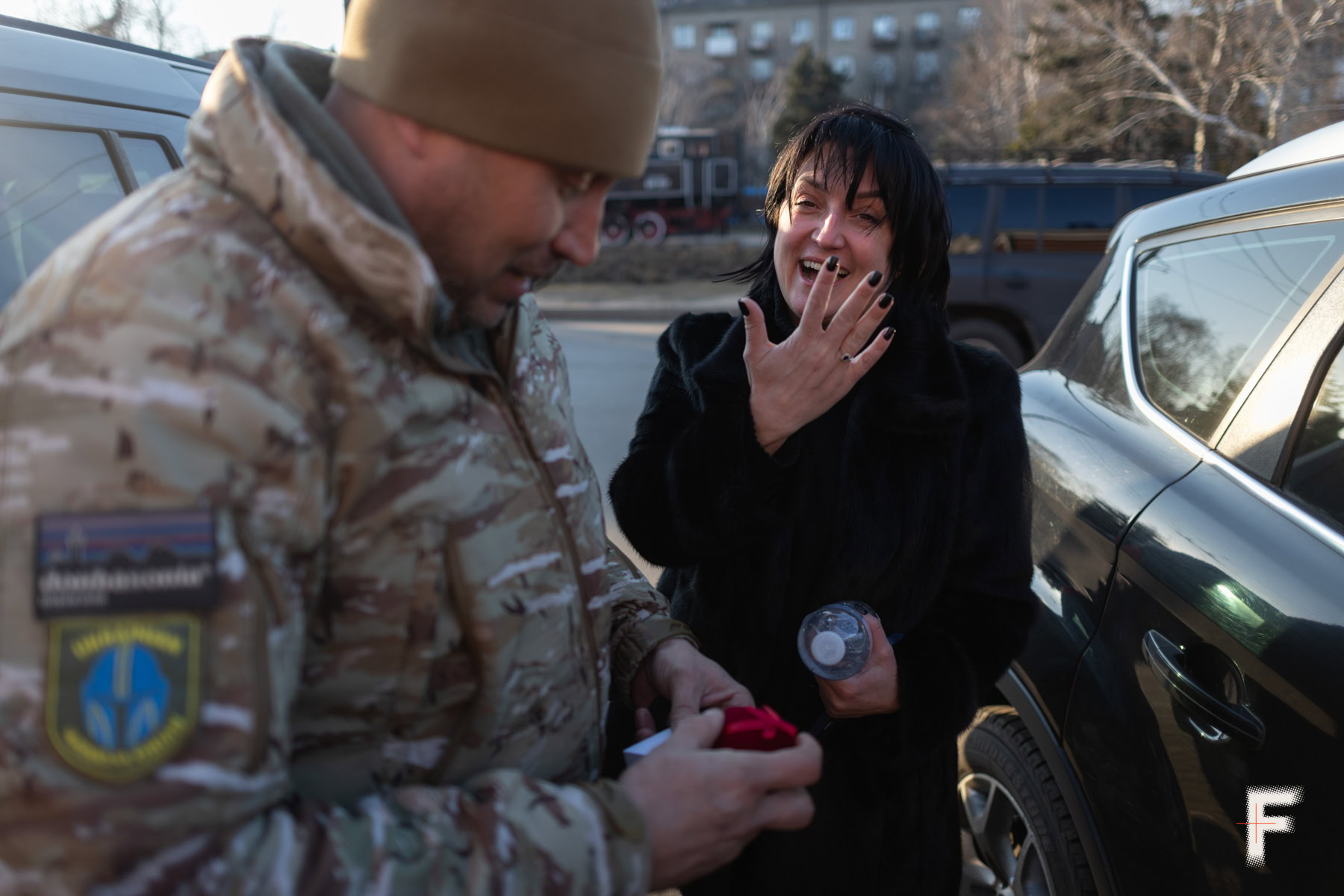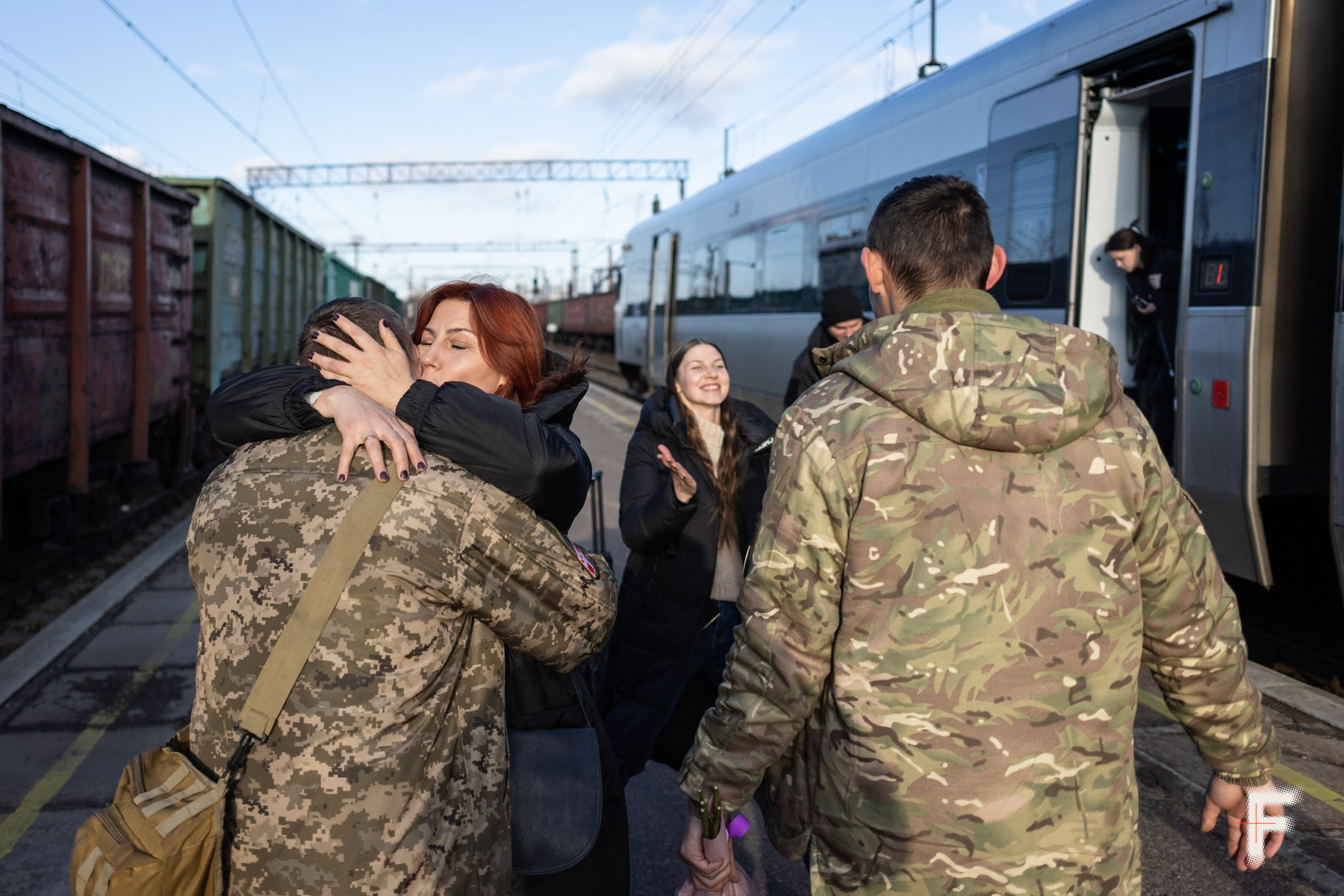

The “Train of Love” no longer runs to Donetsk
Ukrzaliznytsia trains have stopped reaching the stations in Sloviansk and Kramatorsk. Whether service will be restored remains unknown, and at the moment it seems unlikely. Trips to Kramatorsk, the easternmost train station in Ukraine, were steeped in symbolism and love. Frontliner revisits the history of the Kramatorsk railway station during the years of the Great War.
Trains heading east from various parts of Ukraine departed from Ivano-Frankivsk, Lviv, and Kherson. One of the busiest at any time of year was the high-speed Intercity+ Kyiv-Kramatorsk, often referred to as the Kyiv-War train. It carried soldiers with large duffel bags, those they held dear, and local residents. Less than seven hours into the journey, passengers could see the first slag heaps through the window.
[Translator’s note: Slag heaps are a characteristic feature of mining regions in eastern Ukraine (Donetsk, Luhansk), and are often visible from a distance, making them a recognizable symbol of that terrain.]


Before reaching Kramatorsk, the train made a brief stop in Sloviansk. Only a few passengers stepped off at the empty station. The silence there unsettled those traveling east for the first time. If everything here was already so still, what awaited them at the next stop?
“The Train of Love”


But in Kramatorsk, things were different. The platform resembled a floral greenhouse: dozens of soldiers with bouquets waited for their loved ones. For a fleeting moment – the moment of reunion – the world seemed to stop for the couples, even though bustle and noise surrounded them. At the Kramatorsk station, people kissed, embraced, and even proposed to one another. It was as if, in that single moment, they were trying to fill all the emptiness left by distance and unrelenting stress.


Reunions at the station were preceded by days of preparation. In Kramatorsk, or somewhere closer to the rear, men searched for the perfect flowers and rings while their loved ones packed piles of treats. Lovers and their soldiers counted the days, and then the hours, until the moment of meeting. And that is why the station welcomed not only the “train to war” but also the “trains of love.”


Soldiers escort their relatives home
Those arriving pushed their way through the crowd onto the plaza in front of the station. They hailed the taxi still operating in the city. Each couple had their own plans: a date in Donbas, a return to the front line, or a brief period of leave. This intense, unusual rhythm of life would continue until they returned to this very station.
The train waited forty-five minutes. Lovers delayed the moment of parting, but eventually they had to leave – to trade places with those for whom the journey was just beginning. On the train that ran daily to the front, passengers could order whatever food their hearts desired. High-speed Wi-Fi was available. Neat and attentive conductors smiled at the travelers. In the carriages, there was an atmosphere of both the sadness of separation and the joyful anticipation of rest.


Despite the ongoing war, trains continued to run to the Donetsk region
Ukrzaliznytsia has previously suspended service to Kramatorsk – first in 2014. At the start of the full-scale war, Russian forces attacked the station with cluster munitions, killing 61 people and wounding more than 120 as they tried to evacuate from the war zone. Following the attack, Kramatorsk station was closed for six months.
Symbolically, on October 14, 2022, Ukraine’s Defender’s Day, service resumed, and the first Intercity+ from Kyiv arrived in Kramatorsk. Over the next two years, the high-speed train carried nearly a million passengers and became one of the most travelled routes in the country.
Tickets were snapped up long before the departure date – right up until the moment service was canceled again. In recent months, Russian forces began actively targeting railway infrastructure both in war zone regions and deep in the rear. Trains were delayed. Railway workers managed the best they could, and passengers did not complain about disrupted plans.
Kramatorsk and Sloviansk have disappeared from train departure boards. The final stop on this route is now the village of Husarivka in the Kharkiv region. From there, passengers must transfer to a bus. Reaching the Donetsk region is still possible, but these routes are becoming increasingly dangerous.
For people in frontline cities, a functioning train station, an open café, or a post office is a lifeline. The cancellation of trains to nearby stations Kostiantynivka and Druzhkivka was an omen of a worsening situation. This is how Russia tries to take away our lifelines – but thanks to the efforts of Ukrainians, it might only be temporary.
Text: Diana Deliurman
Photos: Andriy Dubchak
Adapted: Irena Zaburanna
Read more — Pokrovsk became the first city I witnessed being killed before my eyes
